Yellowstone Vacation Planning Guide
If you’re looking for a trip of a lifetime, we recommend visiting Yellowstone. This Yellowstone vacation planning guide provides all the information you need to plan the perfect trip!
Use our Yellowstone National Park travel guide to know what to pack, where to stay, and things to do!
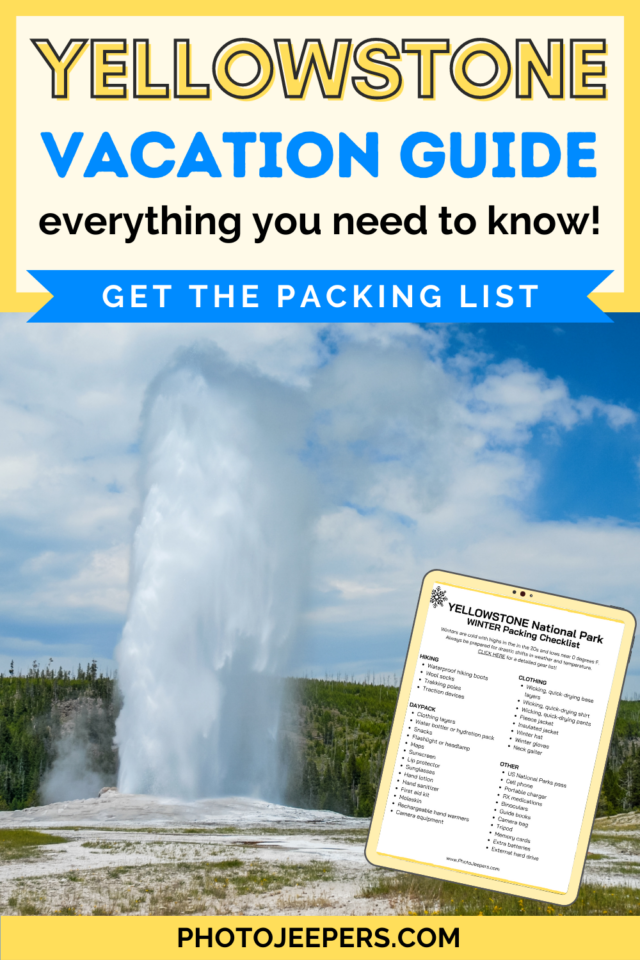
This guide has everything you need to know to plan the most amazing Yellowstone vacation.
It will be easy to create your daily itinerary of things to see, do, and photograph using this Yellowstone vacation guide!
This site contains affiliate links which means WE may receive commissions for purchases made through these links. We only provide links to products we actually use and/or wholeheartedly recommend! As an Amazon Associate, we earn from qualifying purchases. Read the full Disclosure Policy.
A Photo Tour of Yellowstone Waterfalls
Take a visual tour through Yellowstone National Park to see the stunning landscape and waterfalls you’ll find in the park!
Visiting Yellowstone National Park
This famous national park covers roughly 3,500 square miles of wilderness and includes parts of Wyoming, Montana, and Idaho. It is also one of the most popular national parks in the entire United States and sits atop a volcanic hot spot that creates a unique, natural landscape that is unlike anything you’ve ever seen before.
Yellowstone National Park was the first national park ever created in the US and was officially established on March 1, 1872. Included in this dramatic, natural wonderland are an assortment of awe-inspiring canyons, alpine rivers, lush forests, hot springs, and mesmerizing geysers, like Old Faithful.
For wildlife enthusiasts, Yellowstone is also home to a wide variety of fascinating animal species that include bears, wolves, bison, elk, and antelope.
A trip to Yellowstone National Park is an absolute must for any and all outdoor enthusiasts.
We visit Yellowstone multiple times a year (yes, we love it that much!). Our favorite things to see and photograph are the Yellowstone waterfalls, geysers and wildlife.
When to Visit Yellowstone National Park
The best time to visit Yellowstone National Park is during one of the park’s shoulder seasons, which are from April through May and September through October. You’ll avoid the crowds that can overwhelm the park throughout July and August when most families are on summer vacation.
Additionally, you can further reduce your encounters with park crowds by visiting Yellowstone National Park during nonpeak hours, which are either before 9:00 am or after 3:00 pm.
Our favorite months for a Yellowstone vacation are May, October and during the winter. We think they are the best times to visit yellowstone for wildlife.
- Yellowstone in the Spring
- Yellowstone Summer Vacation
- Yellowstone Vacation in the Fall
- Yellowstone Winter Vacation
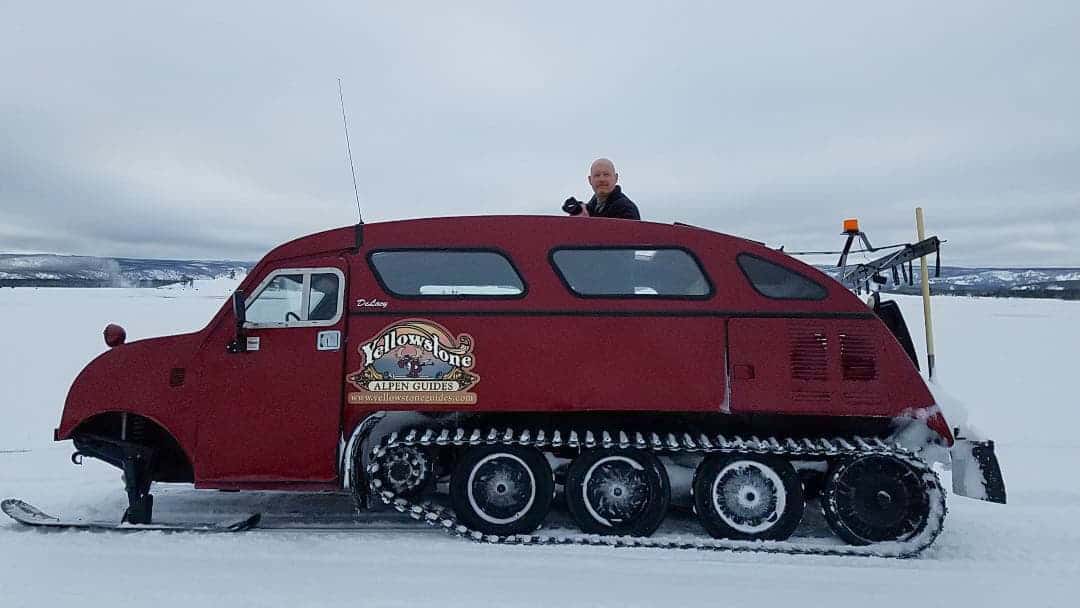
Yellowstone Operating Hours
Yellowstone National Park is open to visitors 365 days a year, twenty-four hours a day if you use the North Entrance, which is located just outside of Gardiner, Montana. This road is regularly plowed during the winter season and will lead visitors to Cooke City, Montana, and the Northeast section of the park.
All other entrances to the park are closed throughout November (to prepare for winter in Yellowstone National Park) and between the end of March and early April (to prepare for summer in Yellowstone National Park). See the website for specific Yellowstone park roads information.
However, summer roads in Yellowstone National Park, once fully opened, can be used by park guests twenty-four hours a day, seven days a week.
Entrance Fees at Yellowstone
There are a variety of passes available to visit Yellowstone National Park. Check the website for the most current Yellowstone fee prices and information.
If you’ll be traveling through the south entrance between Yellowstone and Grand Teton National Park, you will need to purchase a seperate admission pass for Yellowstone AND Grand Teton, or purchase the National Parks Pass.
Yellowstone Weather
Since most of the park sits above 6,000 feet (1829 m) in elevation, daily Yellowstone National Park weather patterns can vary unpredictability throughout each month of the year. Therefore, expect significant seasonal changes in temperature, rain, and snow. Accordingly, regardless of when you visit, be sure to pack a warm jacket, rain gear, and lots of layers.
In spring and fall specifically, daytime temperatures can vary between 30°F and 60°F (0°C to 20°C) in a single day, with overnight lows in the teens and single digits (-5°C to -20°C). Snow is also common throughout these seasons, with accumulations of 12 inches (30.5 cm) in a twenty-four hour period being quite normal.
In contrast, summer, daytime temperatures can often climb as high as 70°F (25°C), and even 80°F (30°C) in lower elevation areas. Nights are also typically cooler, with temperatures that may drop below freezing at higher elevations. Thunderstorms are also common throughout the afternoon.
In winter, park guests can expect average, daytime temperatures between zero and 20°F (-20°C to -5°C), with sub-zero temperatures common throughout the evening. Visitors should also prepare for a signifcant amount of snow, with average snowfall levels around 150 inches (381 cm) per year. However, higher elevations will typically receive twice this amount of snow. Be sure to pack the right winter clothing so you can enjoy your time in the park!
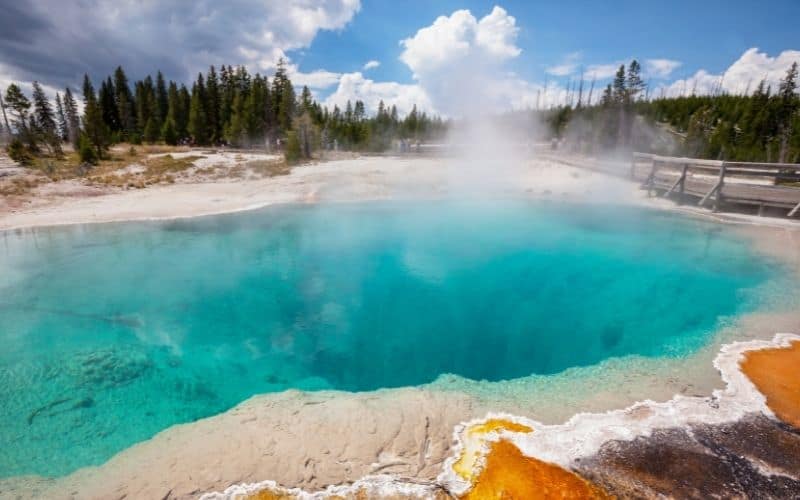
Yellowstone Pets Policy
Because of the number of different animal species that are found within Yellowstone National Park, bringing your pet with you can limit the number of activities you can participate in.
Pets are not permitted on boardwalks, hiking trails, in the backcountry, or in thermal areas.
Therefore, if you do decide to bring a pet with you on your Yellowstone vacation, please remember that pets may only accompany people in developed areas and must remain within 100 feet (30.5 meters) of roads, parking areas, and campgrounds at all times.
Pets must also always be physically controlled while in either a car, crate, or on a leash that is no more than six feet long. As a result, pets may not be left unattended or tied to an object at any time.
And while pets may be left in a vehicle for a short period of time, it is recommended that someone stay with the animal to help monitor their continued well being. Owners are also required to pick up after their pets and dispose of their waste.
Yellowstone Goods and Services
You’ll want to check the Yellowstone website for the most updated operating times for all services in the park.
Yellowstone Visitor Centers
- Old Faithful Visitor Education Center (open daily between April and early November)
- Canyon Visitor Education Center (open daily between May and mid-October)
- Fishing Bridge Museum and Visitor Center (open daily between late May and late September)
- Grant Village Visitor Center (open daily between late May and late September)
- Madison Information Station (open daily between late May and late September)
- Albright Visitor Center at Mammoth (open daily, year-round, between 9:00 and 5:00 pm, at Mammoth Hot Springs)
- Norris Area Museums (The Norris Geyser Basin Museum and the Museum of the National Park Ranger are open daily between late May and late September)
- West Yellowstone Visitor Information Center (open daily, year-round and located in the town of West Yellowstone)
Many of these visitor centers also contain park stores that sell a variety of different souvenirs: books, artwork, and educational materials.
Yellowstone Service Stations
These service stations offer 24-hour, year-round, credit card fueling: Canyon Village, Fishing Bridge, Grant Village, Mammoth Hot Springs, Old Faithful, and Tower Junction.
Yellowstone Cell Service
Like most national parks, cellular service is limited in Yellowstone since cell towers are only found at Mammoth Hot Springs, West Yellowstone, Old Faithful, Grant Village, and Mount Washburn. Therefore, service can be found within most developed areas of the park, as well as at both the North and West entrances.
That being said, during the summer, the sheer number of visitors and cell phone users can frequently overwhelm the system and result in an inability to text, call, or use cellular data. If this happens, guests can use free WIFI services at Albright Visitor Center in Mammoth Hot Springs (WIFI is also available at some hotels and lodges around the park).
Yellowstone Medical Services
- Mammoth Clinic
- Lake Clinic
- Old Faithful Clinic during the summer
All clinics are open to the public and fully equipped for most medical emergencies and routine care. Services include injury/illness treatment, x-rays, and some lab and pharmacy services. If in-patient care is required, clinic staff can stabilize patients and transfer them to hospitals outside the park.
Miscellaneous Services at Yellowstone
- Powell Lock for locksmith services
- US Post Offices: Canyon Village, Grant Village, Lake Village, Mammoth Hot Springs, and Old Faithful.
For visitor convenience, general stores, gift shops, mini stores, and park stores can be found throughout the park allow visitors to buy a wide variety of gifts, food, and travel essentials.
Check the Yellowstone website for operating hours and seasons for the various services in the park.
Yellowstone National Park Map
Printable and interactive Yellowstone maps to help navigate through the park.
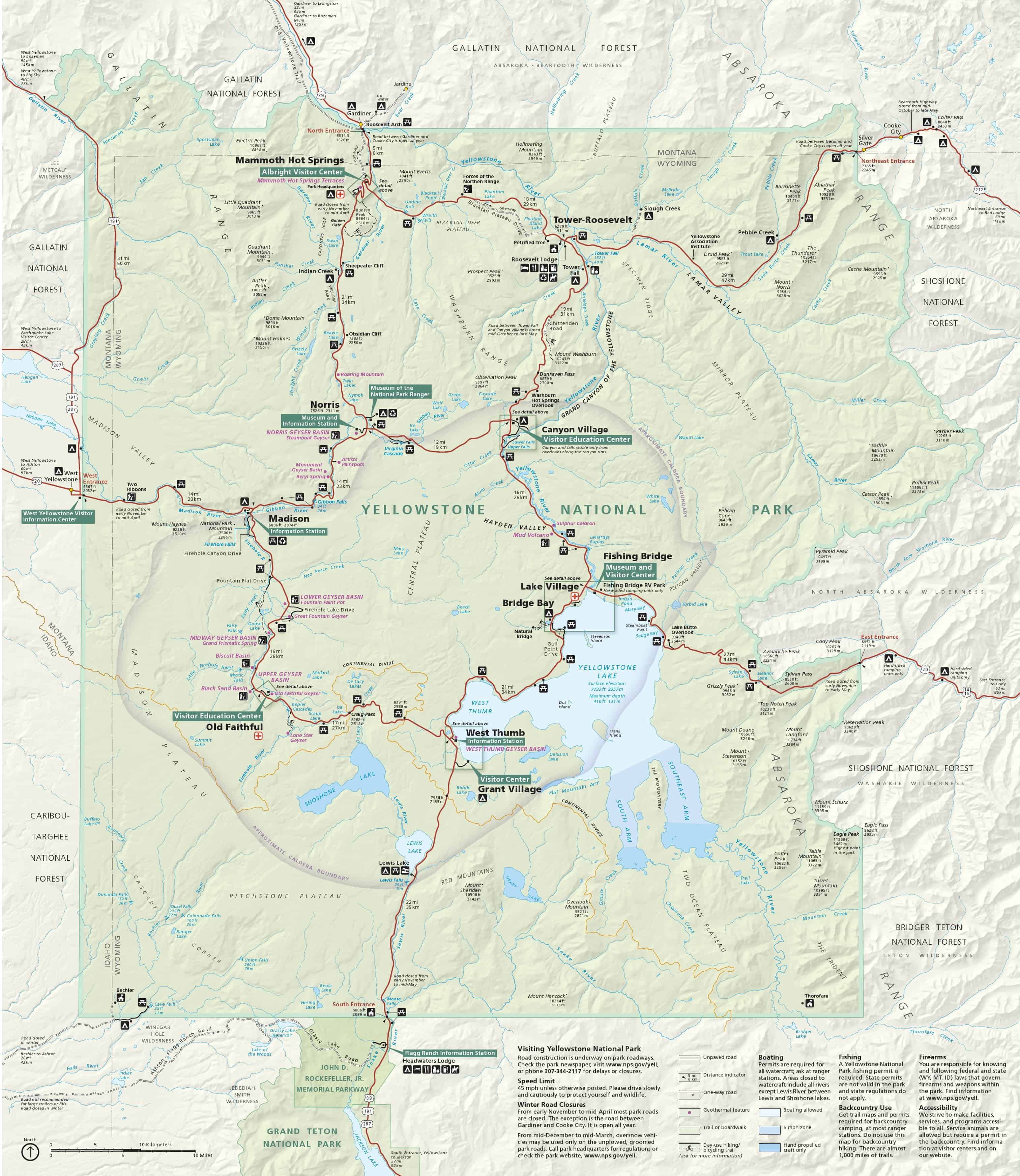
HOW TO GET TO YELLOWSTONE
You will need a car to get around the park. There are no shuttles like you’ll find at other national parks. There are guided tour operators, but it’s not a good option for a multi-day trip. Bikes are a common sight on park roads, but both riders and drivers should exercise extreme caution.
So, you’ll need to fly to an airport near Yellowstone then rent a car. Or enjoy a fun road trip traveling to the park.
Airports Near Yellowstone
Year Round Airports
- Salt Lake City, Utah – International Airport – SLC
- Idaho Falls, Idaho – IDA
- Bozeman, Montana – BZN
- Billings, Montana – BIL
- Cody, Wyoming – COD
- Jackson Hole, Wyoming – JAC
Seasonal Airport
- West Yellowstone, Montana – WYS (June through mid September from Salt Lake City, Utah)
Shuttle Service
- Salt Lake Express from Salt Lake City, Utah or Idaho Falls, Idaho
THINGS TO DO ON YOUR YELLOWSTONE VACATION
Here’s a list of things to do at Yellowstone National Park to add to your vacation itinerary!
Check out this detailed guide about all the things to do along the two loops:
We also have a day-by-day itinerary for spending 4 Days at Yellowstone National Park!
Yellowstone Points of Interest
The park includes a wilderness area of more than 2.2 million acres, it should come as no surprise this enchanting, natural landscape is brimming over with exciting places to explore.
The Yellowstone waterfalls, hydrothermal areas, and diverse wildlife means tere will be no shortage of natural wonders for you to discover.
To help you plan the perfect Yellowstone National Park itinerary, here’s our list of Yellowstone’s top attractions you absolutely must see during your Yellowstone vacation.
We are listing the points of interest in geographic order starting and ending in West Yellowstone.
You can also book a tour to drive the Yellowstone Loop! We also recommend the GyPSy Yellowstone Audio Tour!!
West Yellowstone to Madison
From West Yellowstone, you’ll drive east next to the Madison River then head south at the Madison Junction and drive next to the Firehole River. These two rivers are known for great fly fishing. And you’ll often see wildlife along the rivers as well.
One of our favorite things to do is view and photograph spectacular Yellowstone waterfalls. Don’t miss the scenic drive in Firehole Canyon to see Firehole Falls.
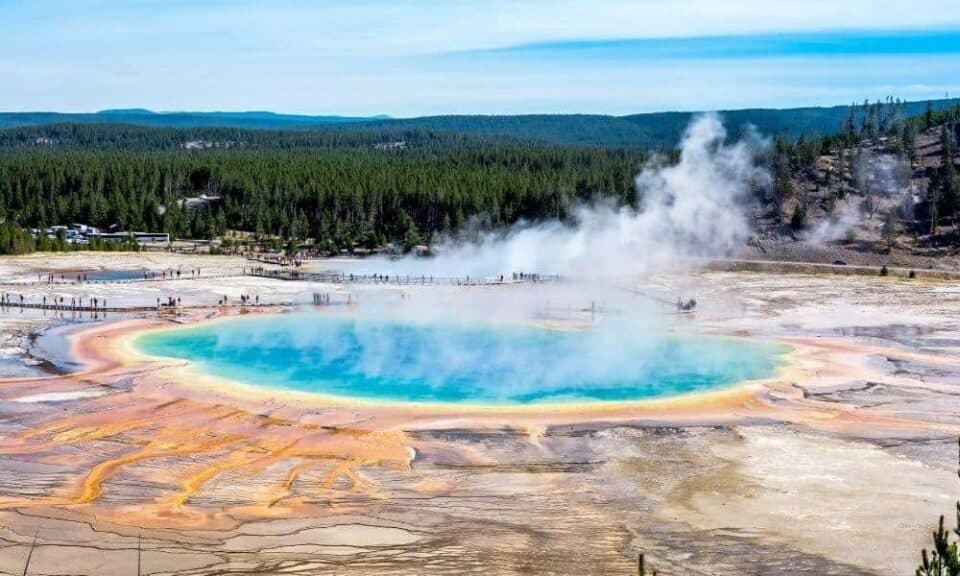
Lower and Midway Geyser Basins
As you continue south you’ll drive through the Lower Geyser Basin where you’ll find the Fountain Paint Pots and other hot pools and geysers.
When you reach the Midway Geyser Basin, the one must-stop location is Grand Prismatic Spring. It’s a huge oval pool surrounded by unusually colorful bands of algae and travertine terraces, with wavy run off channels.
A half mile boardwalk trail runs part way around the spring, past two much smaller pools (Opal and Turquoise) and Excelsior Geyser, formerly the largest geyser on Earth.
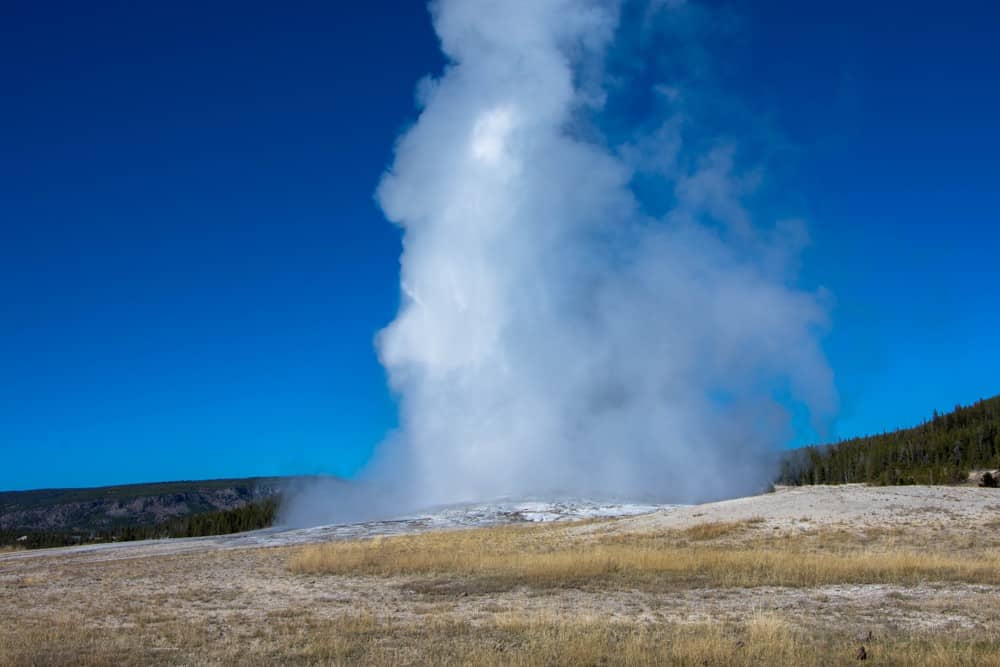
Old Faithful & Upper Geyser Basin
Watching Old Faithful Geyser erupt is a quintessential Yellowstone National Park experience that people from all over the world come to enjoy. In fact, it was the unique, predictability of Old Faithful’s eruptions that led the American government to establish Yellowstone as the first national park in the world, in 1872.
No Yellowstone vacation would be complete without a trip to Old Faithful, one of almost 500 geysers in the park, and one of six that park rangers can currently predict.
For the best view of the eruption, try watching from either the Old Faithful viewing area or from the boardwalks that wind around the geyser itself.
The geysers of the Upper Basin in Yellowstone National Park represent the most concentrated group in the world – over 250 are found in an area just 2 miles across:
- Geyser Hill
- Black Sand Basin
- Biscuit Basin
- Morning Glory Pool
Check out all the Old Faithful area day hikes in Yellowstone where you can see geysers, hot pools, and waterfalls!
West Thumb & Grant Village
From Old Faithful, continue south and east toward the West Thumb Geyser Basin. Two circular boardwalk trails totaling 0.75 miles pass by colorful hot pools and springs, steam vents and mud pots.
Most of the geysers here are just bubbling pools, but it has the added attraction of being right next to Yellowstone Lake
Near Grant Village you’ll have the option to head toward the South entrance for visiting Grand Teton National Park.
Yellowstone South Entrance to Grand Teton
The drive toward Grand Teton is beautiful. There are a few hiking trails and photographic spots we recommend: Lewis Lake, Lewis Falls and Moose Falls.
Because Grand Teton National Park begins just south of Yellowstone, there are no towns with hotels until Jackson, about 57 miles away.
Bridge Bay, Lake Village & Fishing Bridge
Continuing north from Grant you’ll drive along Yellowstone Lake. It’s the largest lake in the USA at this elevation (7,773 above sea level). Go rafting, kayaking, paddling, boating, and fishing. The water is generally too cold for swimming, and the whole surface is frozen solid for several months in winter.
A fun stop in Bridge Bay is a short hike along a forested trail to a small rhyolite natural bridge, framing a minor stream.
Lake Village has a hotel, ranger station, post office, visitor center and day hiking trails.
The road forks just after the village where the left branch leads to the popular Canyon area and the right fork crosses the Yellowstone River over the historic Fishing Bridge.
From here the road follows the north shore for a while then turns away from the lake towards the East Entrance of the national park. About 50 miles after the park entrance you’ll reach Cody, Wyoming where you’ll find a good variety of lodging and food options.
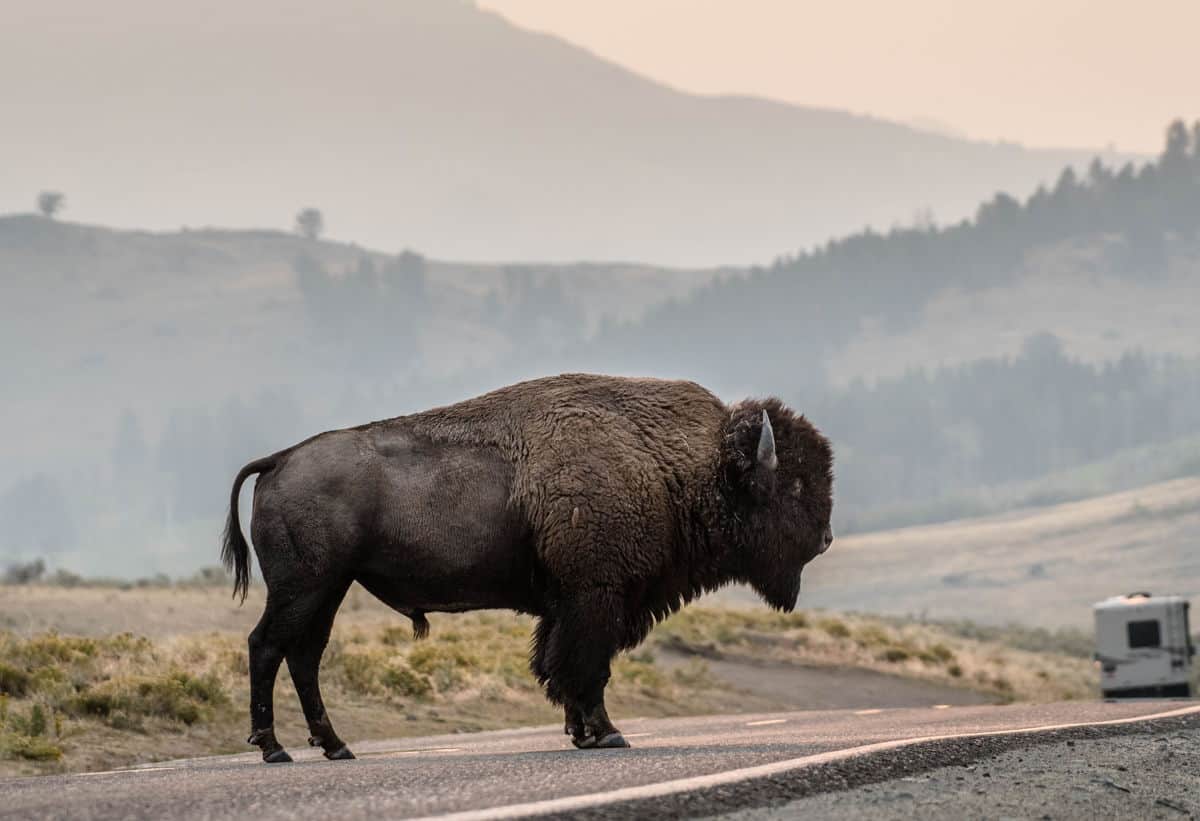
Hayden Valley
The Yellowstone River flows from the north end of Yellowstone Lake into the wide open grasslands and marshes of Hayden Valley. This is one of the best locations for roadside wildlife viewing in Yellowstone.
Before the river enters the flatland of Hayden Valley, it descends at LeHardys Rapids. You’ll then pass through an interesting, and smelly, thermal region with a variety of mudpots, fumaroles, sulphurous springs and odorous pools.
Bison are often found in this area. PLEASE follow the wildlife regulations for the park:
Wild animals are unpredictable and dangerous. Every year people are injured when they approach animals too closely. Animals that attack people may need to be relocated or killed. To protect yourself and the animals you come to watch, always remain at least 100 yards (91 meters) from bears or wolves, and at least 25 yards (23 meters) from all other wildlife.
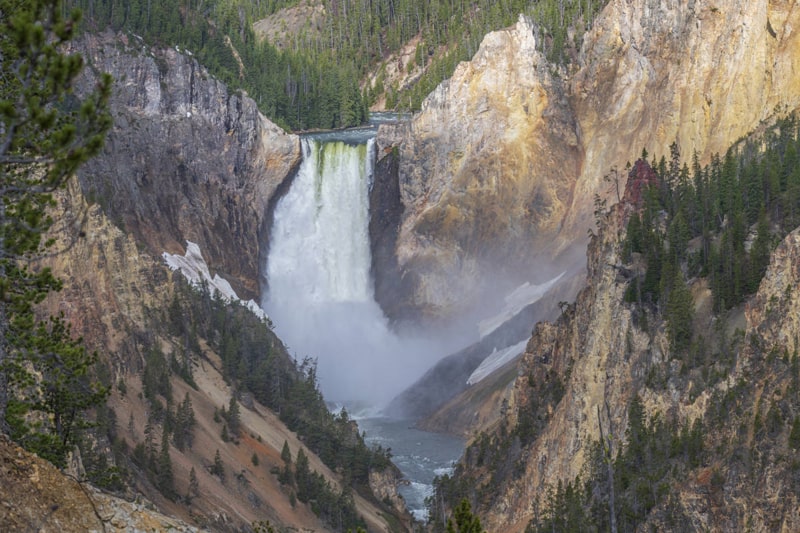
Grand Canyon of the Yellowstone & Canyon Village
The Yellowstone River flows over two large waterfalls and drops into the Grand Canyon of the Yellowstone.
It’s a spectacular canyon with steep walls formed of jagged, eroded, chemically altered volcanic rocks of unusually bright colors – red, pink, orange and white.
Viewpoints for the Upper Falls:
- Upper Falls Trail
- Uncle Tom’s Trail
- Artist Point
North Rim Viewpoints for the Lower Falls:
- Brink of Lower Falls
- Lookout Point
- Red Rock Point
- Grandview Point
- Inspiration Point
Check out all the Canyon area day hikes at Yellowstone!
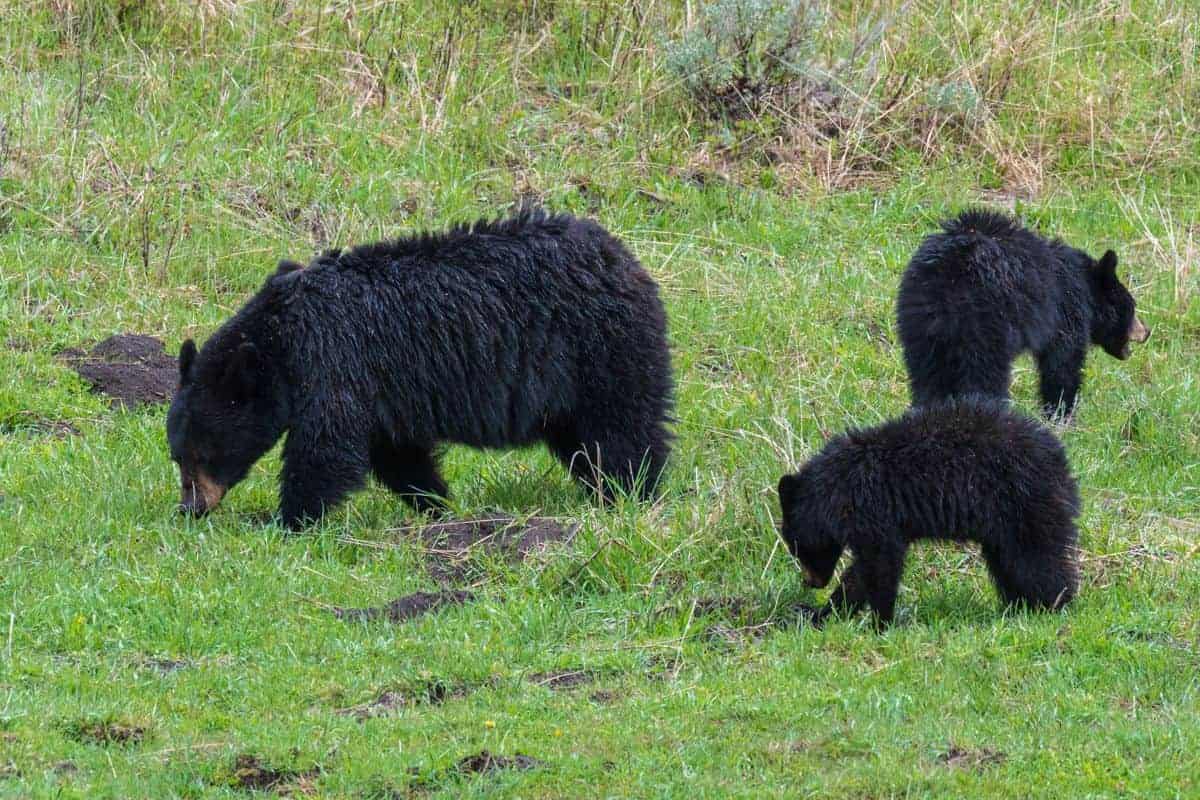
Tower-Roosevelt
From Canyon, you’ll drive north toward Tower along Dunraven Pass over Mount Washburn (10,243 feet). Dunraven Pass (8,859 feet) is the highest road pass in Yellowstone. It can get snow at any time of year, even summer. It may close during a regional snow storm, and it is always the first road to close in the fall as the park prepares for the winter.
This road is the perfect location to view various areas of the park from a high vantage. If you want to get even higher, hike the trail to the summit of Mount Washburn in just a few short miles!
Continue north and you’ll reach Tower Falls. Hike the short trail to see the 132 foot waterfall. There’s a general store and snack bar here.
As you drive around the Tower area, keep an eye out for bears. It’s one of the best spots to see black bears in Yellowstone.
Make your way toward Tower Junction where you’ll find Roosevelt Lodge, cabins, a store, restaurant, gas station, and horse rentals. One of the fun things to do here is ride out to Yancy’s Hole on a horse or in a covered wagon to enjoy the popular Old West Dinner Cookout.
Lamar Valley & the Northeast Entrance
If you want to see wildlife, add Lamar Valley to your Yellowstone vacation itinerary. It’s a wide open, grassy expanse which makes it easier to spot wildlife. Bison are most common here, and many hundreds may often be seen, sometimes walking right next to or along the road. But if you’re lucky, you’ll see wolves and grizzly bears.
When you reach the often smelly Soda Butte formation, the road will turn toward the northeast. You’ll travel through beautiful wooded and mountainous landscape and come to the Northeast Entrance.
Past the national park boundary there are two small towns, Silver Gate and Cooke City. There are basic facilities in these towns. The US 212 highway from here begins a long, continuous descent through the Shoshone National Forest.
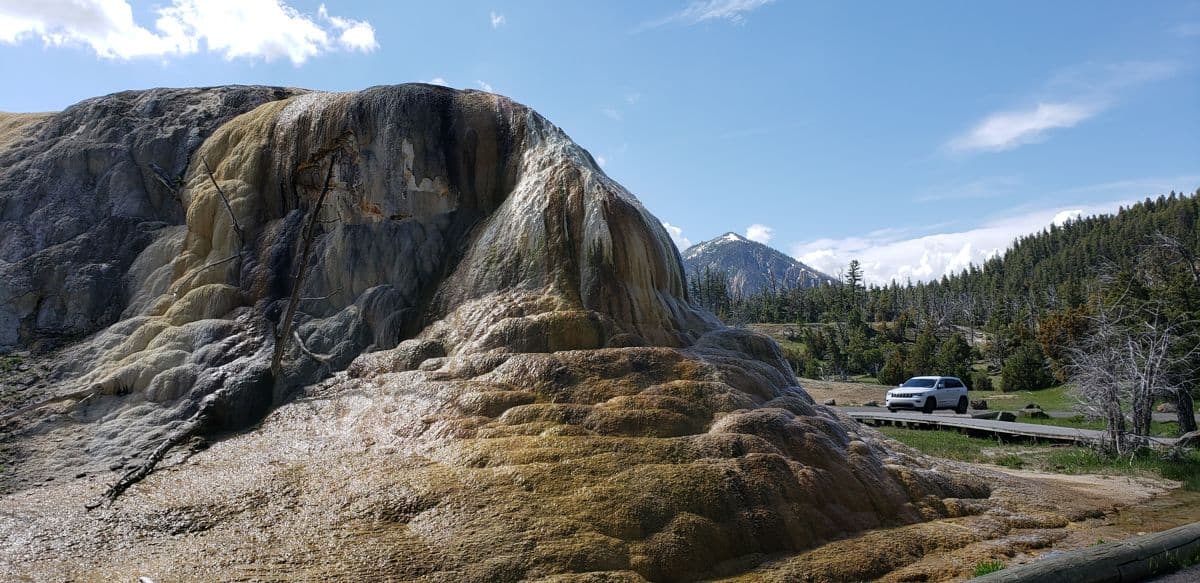
Mammoth Hot Springs & the North Entrance
Return to Tower-Roosevelt Junction and drive toward Mammoth. Along the way you’ll pass the Petrified Tree, Wraith Falls and Undine Falls.
If it’s open, we recommend driving Blacktail Plateau Drive, a 6 mile one-way dirt road that takes you off the paved road to experience the solitude of the Yellowstone wilderness. Driving on this road is slower than the main road, which makes it easier to spot the elk, bison and bears in area and enjoy the views.
There are no geysers or large pools in Mammoth. Instead you’ll see warm, subterranean water has created large areas of beautiful terraces. You can see a bit of these terraces from the main highway, but the trails, boardwalks and a one-way loop drive provide better access.
Mammoth is a small town with a hotel, the historic Fort Yellowstone, a visitor center and some shops.
In the fall, elk congregate on the lawns and fields in Mammoth, and at the North Entrance near Gardiner, Montana.
The North Entrance is the only one of the five that remains open all year. The town of Gardiner has a variety of accommodation, restaurants, shops, gas stations, a grocery store and more.
One notable historical feature is Roosevelt Arch, which was the main entrance to Yellowstone when it was dedicated in 1903 by the 26th president.
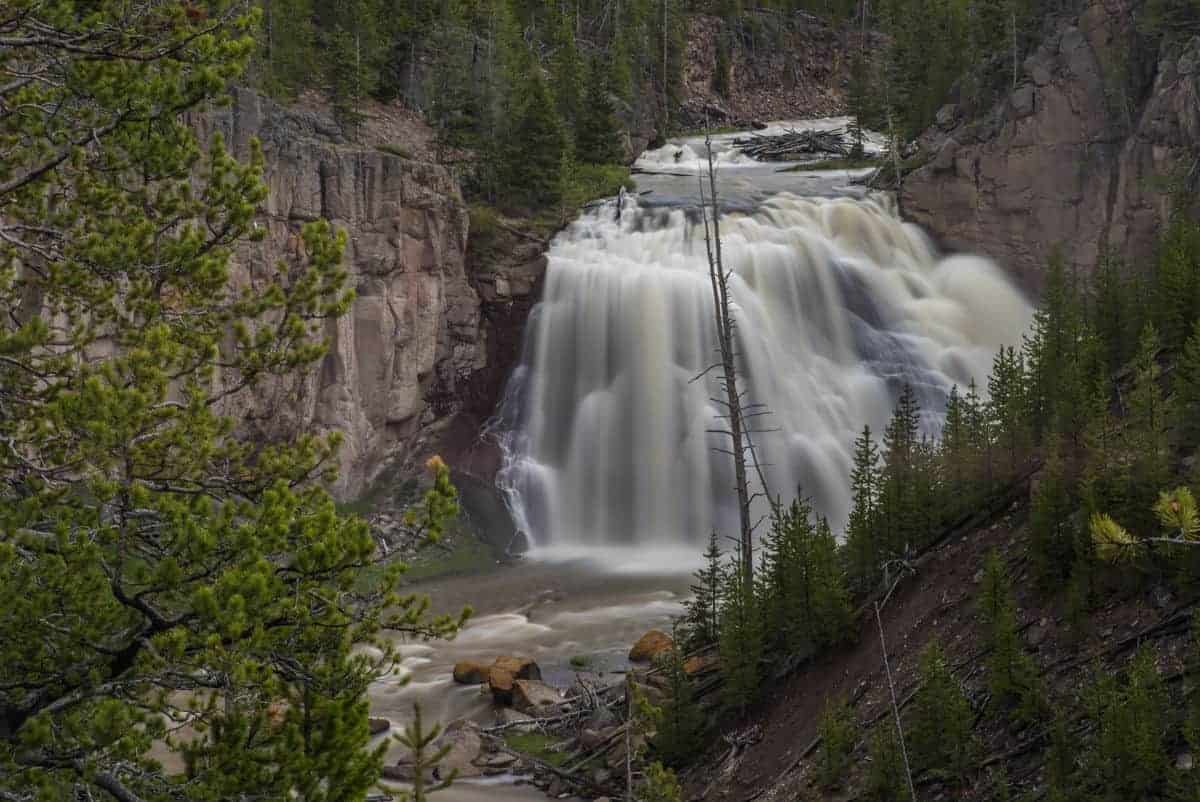
Norris
The drive from Mammoth to Norris is fairly flat where you’ll find meadows, lakes (Swan, Twin and Beaver) and some geyser features (Roaring Mountain).
The Norris Geyser Basin is full of dynamic thermal activity you can see, and it’s home to Steamboat Geyser, the largest active geyser in the world.
At the Norris Junction, you can take the road toward Canyon where you’ll drive through Gibbon Meadows and find Virginia Cascade.
Or you can drive toward Madison. Along this route is the Artists Paint Pots, a collection of small but colorful springs, mud pots and sporadically-erupting geysers. And be sure to stop at Gibbon Falls, an impressive wide waterfall.
We’re now back to where we started, and you’ve got a general idea of all there is to see on your Yellowstone vacation.
WHERE TO STAY IN YELLOWSTONE
Whether you’re looking to get back into nature with a rustic camping experience or want to enjoy some of the finer things in life at one of park’s many delightful summer or winter lodges, there are no shortage of places to stay at Yellowstone National Park that you and your family will love.
Depending on when you plan to take your Yellowstone vacation, this national park has a variety of different seasonal lodges for guests to enjoy. And while all of the lodges below are open throughout the summer, only the Yellowstone winter lodging options are: Old Faithful Snow Lodge & Cabins and Mammoth Hot Springs & Cabins.
Use the list below to determine which fantastic Yellowstone accomodation will be the perfect addition to your Yellowstone vacation.
Always check the NPS website for the most current lodging and camping information and rates.
Yellowstone Park Lodges & Cabins
Lake Yellowstone Hotel and Cabins – The timeless elegance and Colonial Revival style of this hotel’s majestic decor welcomes you as take in some of the stunning views of Yellowstone Lake from the Hotel’s Sun Room. In addition to the ultra-modern guest rooms and cabins here, guests can also utilize the hotel’s delightful dining room, bar, deli, and fully equipped business center.
Canyon Lodge and Cabins – This massive facility is located on the east side of the park, near the Grand Canyon of the Yellowstone River, and has 500 different rooms and cabins for guests to choose from. Inside the hotel’s main public building, guests will also find a variety of different high-quality, gift shops and restaurants.
Mammoth Hot Springs Hotel & Cabins – Located near the iconic, Mammoth Hot Springs, this hotel was initially constructed in 1936 and has retained much of it’s past, vintage charm, with exquisite details like a large wooden map of the United States, that was constructed using of 15 different types of wood. Today, guests can relax inside the hotel’s full bar and enjoy live piano music from a local musician. Hotel patrons can even marvel at elk as they graze on the lawn of the hotel.
Old Faithful Snow Lodge & Cabins – This modern, full-service hotel features chic, timber construction and a fabulous, cedar shingle roof, both of which prove that national park accommodations can be luxurious too. Also within the hotel are a full-service dining room, a quick service “Geyser Grill” and a charming little gift shop.
Old Faithful Inn – Built between 1903 and 1904, using local logs and stone, this timeless lodge is not just a national historic landmark, but it’s also the largest log structure in the world. While staying here, guests can choose between 327 rooms and enjoy a multitude of amenities that include live music, a full-service restaurant, lounge, snack bar, gift shop, and daily tours.
Grant Village – Named after former president Ulysses S. Grant, this Yellowstone accommodation is located near the West Thumb of Yellowstone Lake and features six, two-story buildings that each house 50 rooms but sadly, no elevators. Also on-site are a full-service restaurant, a lakeside restaurant, a lounge, and a gift shop.
Lake Lodge Cabins – This enchanting hotel has an enormous main lodge, with an adjoining porch that gives guests exquisite views of nearby, Yellowstone Lake. Surrounding the main lodge are 186 private cabins with either Western and Frontier style interiors.
Old Faithful Lodge Cabins – This historic cabin facility is located near Old Faithful Inn and includes a one-story main lodge, as well as an assortment of on-site cabins that provide visitors with spectacular views of Old Faithful. Inside the lobby, guests can enjoy a bakery/snack shop, as well as a cafeteria-style food court.
Roosevelt Lodge and Cabins – Built in 1920, this historic lodge sits near Tower Falls and has a multitude of rustic cabins that help reawaken the spirit of the old west. Add in some family-style dining, trail rides, stagecoach adventures, and an Old West Dinner Cookout, and you have a truly, one in a lifetime experience that everyone, from families to grizzled old hunters, will love.
However, if you’re looking to get back in touch with the natural beauty of this park’s awe-inspiring terrain, then why not pitch a tent or park an RV under Yellowstone’s breathtakingly beautiful night sky? With five incredible, on-site, campgrounds to choose from, visitors can pick an ideal location for them to get up close and personal with mesmerizing wildlife, mind-blowing mountain ranges, and expansive meadows.
Yellowstone Campgrounds
Madison Campground – With 270 Tent, RV, ADA, and combination RV/tent campsites, this Yellowstone campground is perfect for anyone who enjoys fishing or who wants a campsite that is within close proximity of Old Faithful, as well as the Upper, Midway, and Lower Geyser Basins.
Canyon Campground – Located within a mile of the Grand Canyon of Yellowstone, this campground is one of the most popular in all of Yellowstone, given its central location and scenic views. This site also has 270 Tent, RV, ADA, and combination RV/tent sites that provide guests with easy access to popular hiking trails, like Uncle Tom’s Trail.
Bridge Bay Campground – The scenic, wooded area is home to 400 Tent, RV, ADA, and combination RV/tent campsites. Because of the campground’s close proximity to Bridge Bay Marina, this site is particularly popular with both fishing and boating enthusiasts.
Grant Village Campground – With Tent, RV, ADA, and combination RV/tent sites, Grant Village Campground is the perfect place to relax amidst scenic views of the southwest shore of Yellowstone Lake. Nestled within a charming lodegpole pine forest, this campground allows you to escape the crowds, but all while staying within close proximity of West Thumb Geyser Basin and various other park services.
Fishing Bridge RV Park – Located near the mouth of the Yellowstone River and surrounded by a majestic pine forest, this campground has 340 sites that are specifically designed for hard-sided, recreational vehicles only. All sites here can accommodate double-wide trailers, have all necessary trailer hook ups, and can hold vehicles that are up to 40 feet in length.
Hotels and Vacation Rentals Near Yellowstone
Places to stay in West Yellowstone
- Holiday Inn, West Yellowstone
- ClubHouse Inn, West Yellowstone
- Kelly Inn, West Yellowstone
- West Yellowstone hotels!
Places to stay in Gardiner
- Yellowstone Gateway Inn, Gardiner – full kitchen and comfy bed, one of our favorite places to stay!
- Park Hotel Yellowstone, Gardiner – charming place to stay and loved by guests!
- Absaroka Lodge, Gardiner – beautiful location with river views!
- Gardiner hotels!
Places to stay in Cooke City or Silver Gate
- Sunny Log Home on the Creek, Silver Gate (VRBO) – the most AMAZING location with an awesome fireplace and comfy bed!
- High Country Motel and Cabins – local owners who love what they do, and make you feel so welcome!
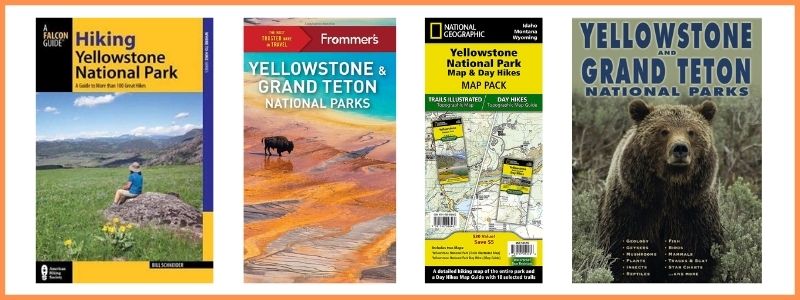


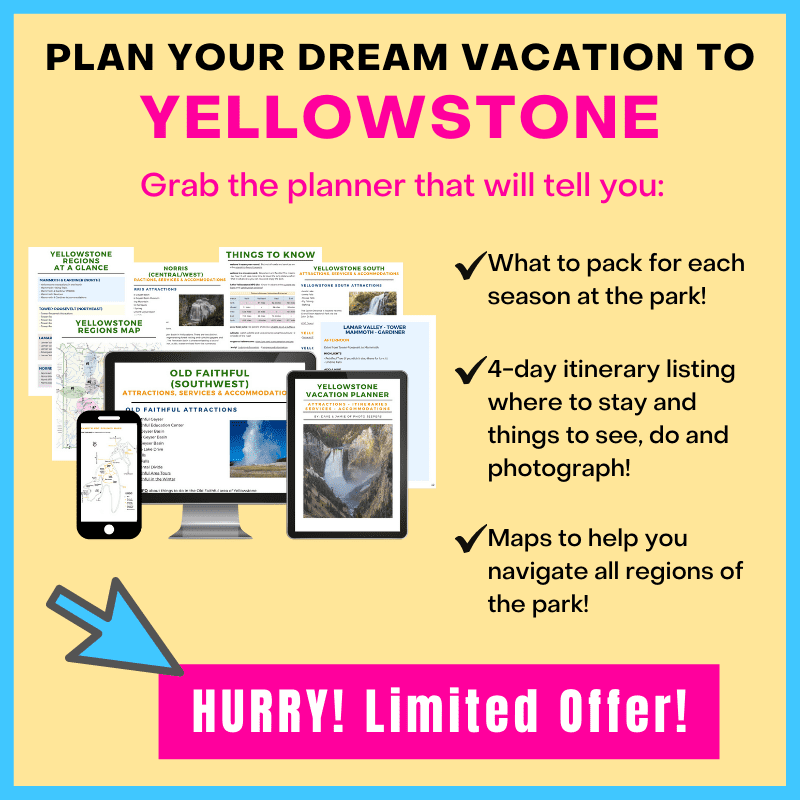
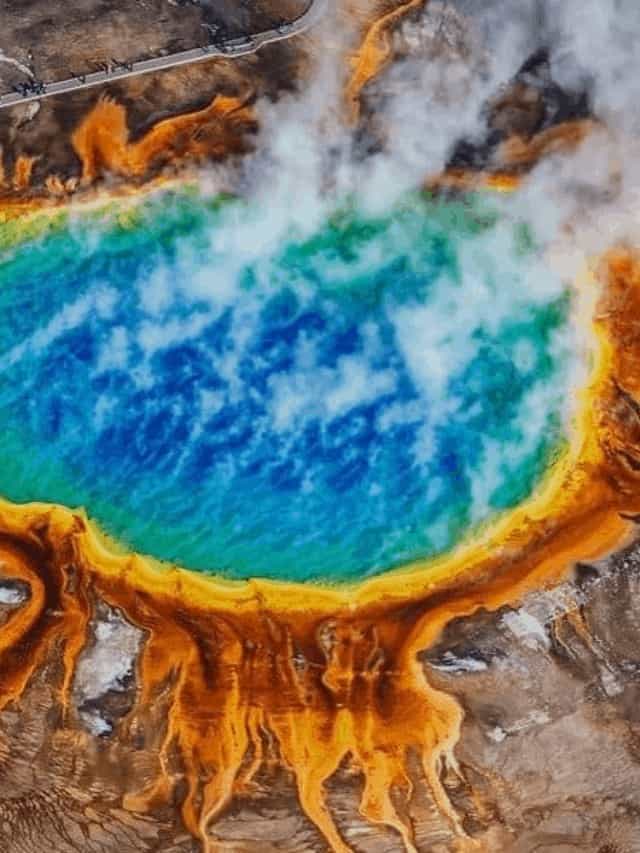
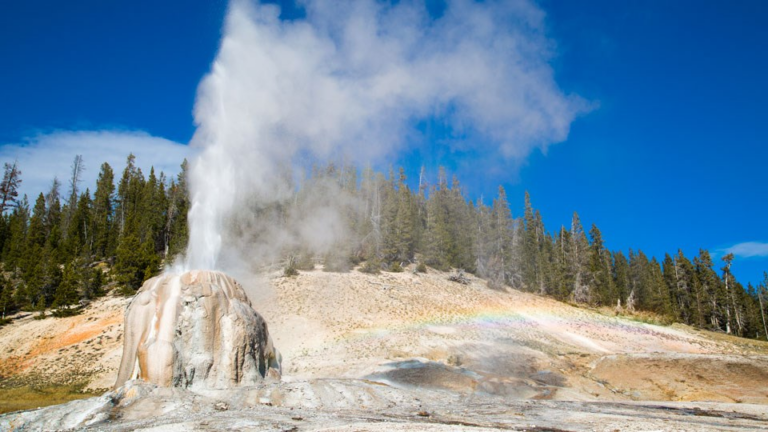
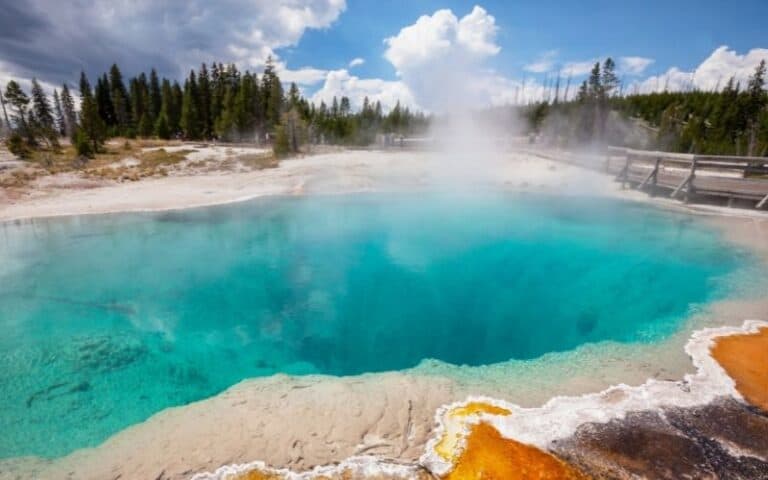
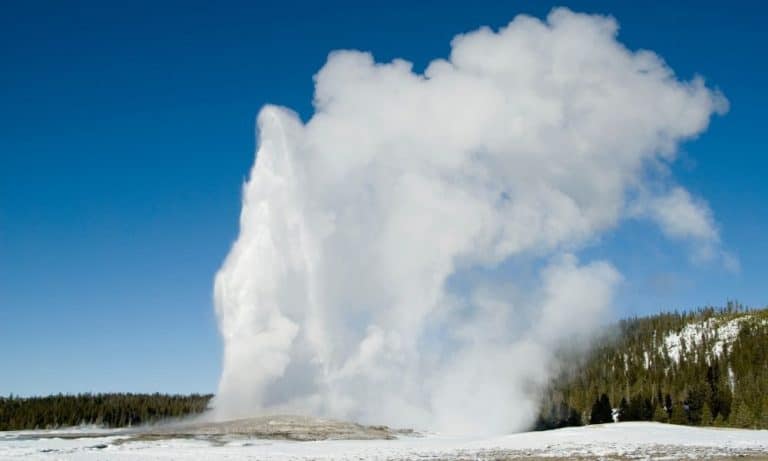
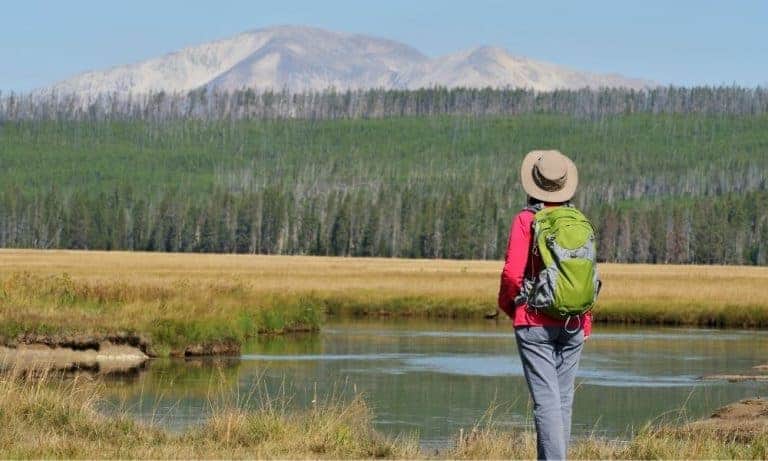
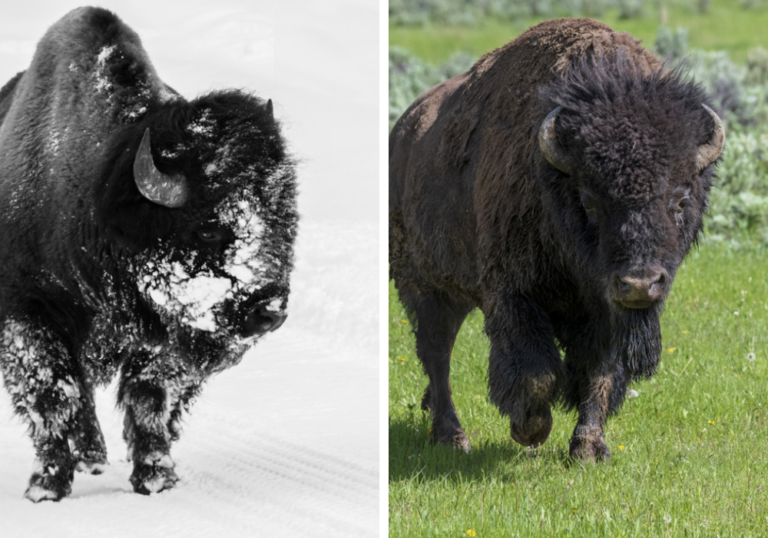
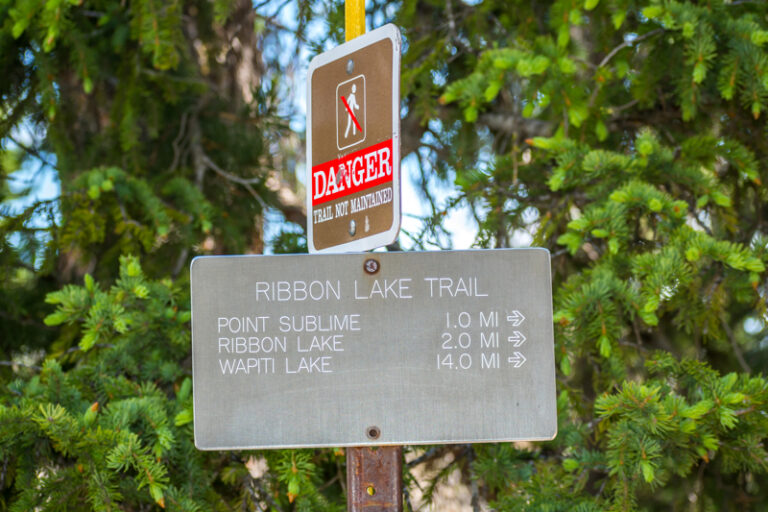
This advice looks great, once I’m fully vaccinated I think I’m gonna go to yellow stones.
My husband and I visited Yellowstone for the first time three years ago and were hooked! I can’t wait to head back for some van camping. Last time, we visited in July and stayed in a Roughrider Cabin at the Roosevelt Lodge. It is perfect for those who are looking for something affordable and don’t mind using a bathhouse. We loved it! Since we were on EST time, we woke up at the break of dawn and had covered a lot of ground before the park started to fill up. Great post! I’ll definitely come to you for advice on our next trip to the park.
The lodges in Roosevelt are so convenient to much of the park – especially Lamar Valley if you want to see wildlife. And yay you got up early to explore before the crowds got into the park!